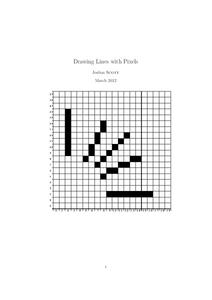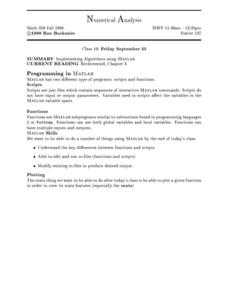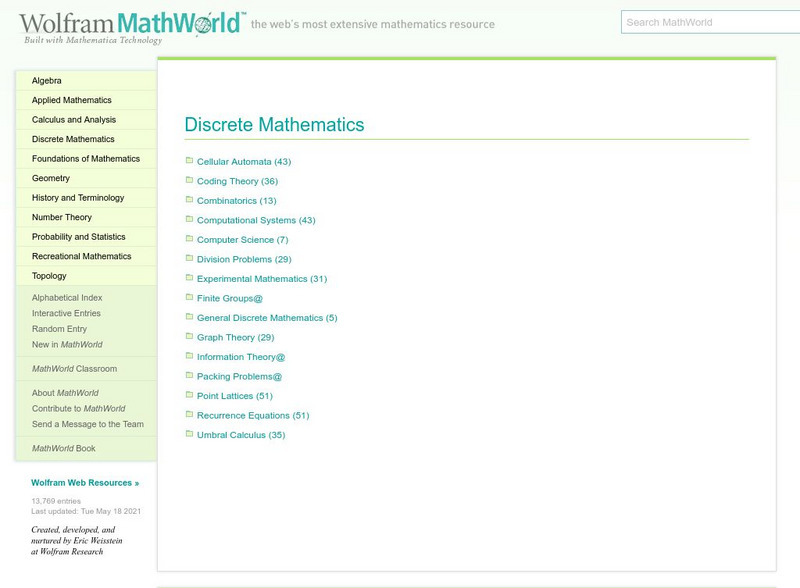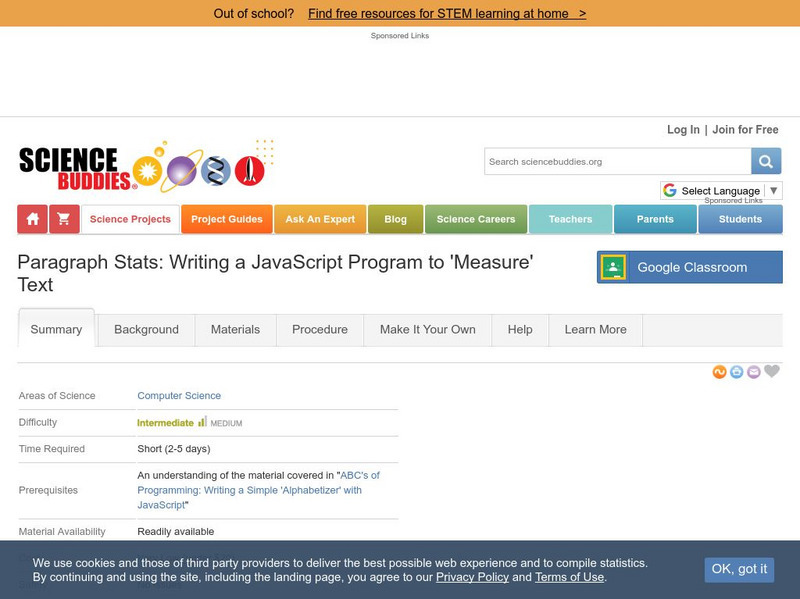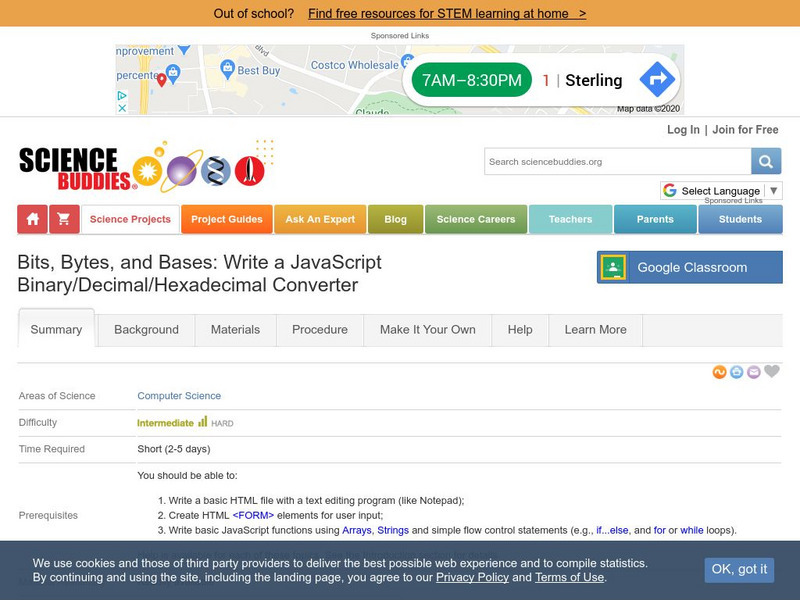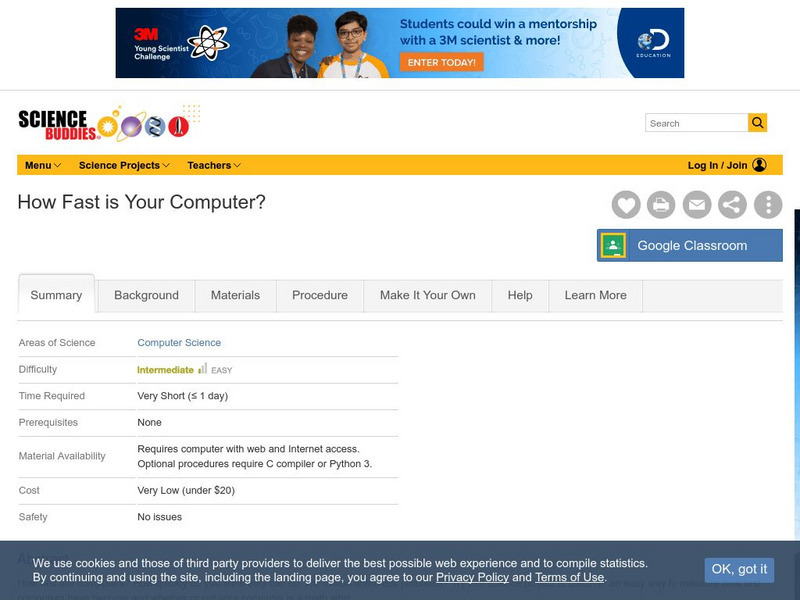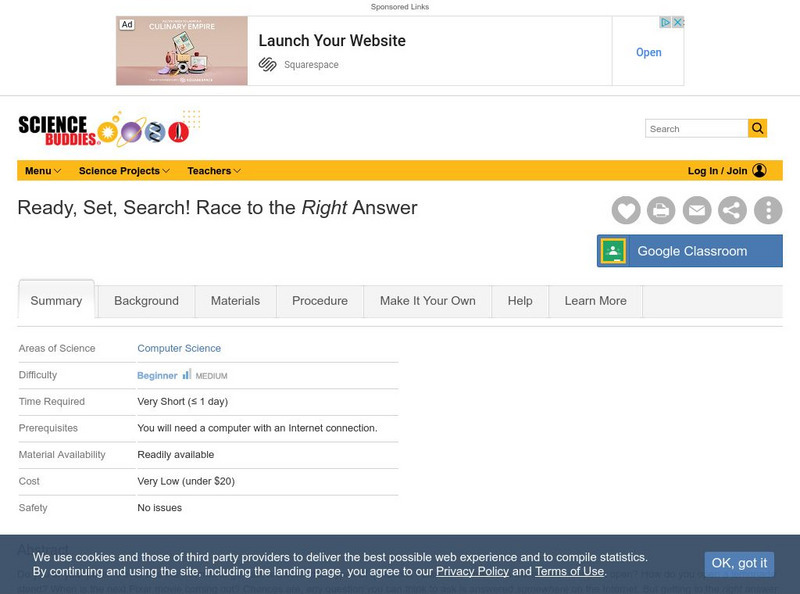TryEngineering
Circuits and Boolean Expressions
Teach basic logic using Boolean operators. Young computer scientists learn about the operators NOT, AND, and OR, and how they can be expressed using Boolean notation, logic gates, or truth tables. Along the way, they learn about half...
Teach Engineering
Complex Networks and Graphs
Show your class how engineers use graphs to understand large and complex systems. The resource provides the beginnings of graph theory by introducing the class to set theory, graphs, and degree distributions of a graph.
Computer Science Unplugged
Harold the Robot — Thinking About Programming Languages
Get young programmers thinking about programming languages with an activity that asks class members to craft directions for one person (teacher, another adult, or a class mate) acting as a robot. Participants direct the robot to...
Computer Science Unplugged
Drawing Lines with Pixels
How do the computers keep it straight? Using the provided algorithms, class members draw a line and a circle using pixels. They then check the drawings using a straight edge and compass to determine the accuracy of their drawings.
Computer Science Unplugged
Sharing Secrets—Information Hiding Protocols
Did you know that you can find the average age of a group of people without anyone having to real their age? This resource provides directions for way to do just that. After the activity, class members read a short passage that provides...
Curated OER
Knowing Your Computer
For this computers worksheet, students examine the eight parts of a computer and ask for adult help to define the functions of each piece of hardware.
Curated OER
Graphing on the Computer
Learners create a bar graph on the computer using given information from the teacher. They create a bar graph using their own information chart (they need to create one on separate paper first). They utilize Microsoft Excel for this lesson.
Curated OER
Computer Science Education Week
Equip students for the 21st century by exploring the fun of computer science.
Curated OER
Science Quizzes: Technology Quiz
In this technology science quiz instructional activity, students respond to 20 short answer and true or false questions regarding computer science and innovations in technology.
Curated OER
Numerical Analysis/ Introduction to Algorithms and Pseudocode
In this math worksheet, students examine the concepts of algorithms and pseudocodes. Then they use the codes on a computer to execute the algorithms.
Curated OER
Implementing Algorithms Using Matlab
In this math worksheet, students practice implementing algorithms using the computer program of Matlab. They practice using the programs of scripts and functions.
Curated OER
Working With Local Computer Policies
In this technology worksheet, students practice setting up a computer system or network to go through the access process for data and logons.
Cosmo Learning
Cosmo Learning: Computer Architecture
A series of 38 video lectures on computer architecture by Prof. Anshul Kumar. With comments section at bottom of the page.
Wolfram Research
Wolfram Math World: Discrete Mathematics Topics List
A thorough list of topics in the study of Discrete Mathematics. Combinatorics, Graph Theory, and Point Lattices are three of the many areas given in-depth explanations here. Many of the links contain discussions of the topics that both...
Science Buddies
Science Buddies: Writing a Simple Calculator Program With Java Script
This is a good first-time programming project. You'll learn how to use JavaScript to create a basic calculator program that you can run in your Web browser.
Science Buddies
Science Buddies: Paragraph Stats: Writing a Java Script Program to 'Measure' Text
This is a challenging first-time programming project. You'll learn how to use JavaScript to create a simple program to analyze one or more paragraphs of text. Your program will count sentences, words and letters, and report the resulting...
Science Buddies
Science Buddies: Write a Java Script Binary/decimal/hexadecimal Converter
This is a challenging first computer science project. You'll learn the basics of how digital devices can represent numbers using only 0's and 1's, and you'll write a JavaScript program to convert numbers between binary, decimal and...
Science Buddies
Science Buddies: Point of a Parabola: Focusing Signals for a Better Wireless Net
Here's a project with practical applications for homes with a wireless network. This project shows you how to build and test parabolic reflectors for the transmitters on your network. You may be able to increase the range of your...
Science Buddies
Science Buddies: How Fast Is Your Computer?
Computer technology continues to develop at a rapid pace. A new home computer is noticeably faster than a machine from five years ago, and dramatically faster than a machine from ten years ago. Exactly how much faster? This project will...
Science Buddies
Science Buddies: Font and File Size
What is your favorite font? In this experiment, you will test how the font style of the letters (or characters) in a file might change the size of the file.
Science Buddies
Science Buddies: How Many Letters?
Can you remember all of your ABC's? Computers need to "remember" letters too. Every time we use a computer to write a story, the computer needs to "remember" the letters in the story by saving them to the computer's memory as a file. In...
Science Buddies
Science Buddies: Getting More Out of Less : Google Hits and Search Terms
Google is the name of the most often used search engine on the Internet. "Googol" is the mathematical term for a 1 followed by 100 zeros. It's a very large number. This experiment will help you test different search terms and find out.
Science Buddies
Science Buddies: Wild About Wildcards
The idea of a wildcard allows you to satisfy any condition. The same concept is behind using a wildcard when searching for something with your computer. Do this experiment to find out if using wildcards to conduct a search can help you...
Science Buddies
Science Buddies: Cd Burning: Take It to the Edge
Did you know that you can tell how much information is on a CD-R without even using a computer? Find out how in this "reflective" experiment.





